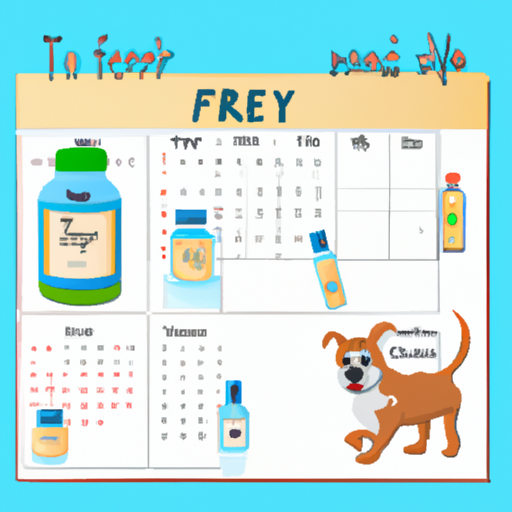As a caregiver to your canine companion, it’s crucial to keep them healthy and happy. One of the most crucial aspects of their health revolves around protecting them from the nuisance and potential dangers of fleas and ticks. This guide will delve into the timely question of “what months do dogs need flea and tick medicine?”
Table of Contents
- Understanding Fleas and Ticks
- The Importance of Flea and Tick Prevention
- When to Start Flea and Tick Prevention
- The Seasonality of Fleas and Ticks
- Preventative Measures
- Choosing the Right Flea and Tick Medicine
- FAQ
Key Takeaways:
– Flea and tick prevention should begin as early as six weeks for puppies.
– Flea and tick infestations are more common during warmer months but can occur year-round.
– Regular preventative measures can protect your dog from flea and tick-related diseases.
Understanding Fleas and Ticks
Fleas and ticks are external parasites that feed on your dog’s blood. While they are tiny, they can cause a significant amount of discomfort and health issues for your pet. Fleas are known for causing skin irritation, allergies, and even transmitting tapeworms. On the other hand, ticks can transmit serious diseases like Lyme disease and Rocky Mountain spotted fever.
To better understand flea and tick life cycles, you can visit this informative page dedicated to educating pet owners about these pesky parasites.
The Importance of Flea and Tick Prevention
Prevention is better than cure, especially when it comes to fleas and ticks. These parasites can infest your dog quickly and are challenging to eliminate. They can also infest your home, leading to a cycle of re-infestation. Regular preventative measures will help protect your dog from discomfort and prevent potential health issues.
When to Start Flea and Tick Prevention
If you are a new puppy parent, you might be wondering when to start flea and tick prevention. According to One Top Dog, puppies as young as six weeks old can start on certain preventative treatments. However, it’s always best to consult with your vet before starting any new medications.
The Seasonality of Fleas and Ticks
Fleas and ticks thrive in warm, humid environments. This means they are most active during the spring, summer, and early fall. However, they can survive indoors during winter, making it important to continue preventative measures year-round.
Here’s a general timeline for flea and tick activity:
-
Spring (March-May): Fleas and ticks begin to emerge with the warmer weather.
-
Summer (June-August): Flea and tick activity is at its peak.
-
Fall (September-November): Activity begins to decrease, but fleas and ticks can still be a problem.
-
Winter (December-February): Outside activity is minimal, but fleas and ticks can survive indoors.
Preventative Measures
Taking preventative measures is the best way to protect your dog from fleas and ticks. This includes regular use of preventative medication, checking your dog for ticks after outdoor activities, and keeping your home and yard clean.
The American Kennel Club has a great article on how to check your dog for ticks.
Choosing the Right Flea and Tick Medicine
Choosing the right flea and tick medicine can be overwhelming with so many options available. The One Top Dog guide for flea and tick products provides a comprehensive overview of different types of medications, from oral tablets to topical treatments and collars.
Remember, what works for one dog might not work for another. It’s best to consult with your vet to find the most effective and safe option for your pet.
Frequently Asked Questions
Q: Can I stop flea and tick prevention in winter?
A: Fleas and ticks can survive indoors during winter, so it’s recommended to continue preventative measures year-round.
Q: How often should I apply flea and tick prevention?
A: It depends on the specific product. Some are monthly treatments, while others last for up to 12 weeks. Always follow the manufacturer’s instructions.
Q: Are there natural ways to prevent fleas and ticks?
A: Yes, there are natural options such as essential oils, diatomaceous earth, and vinegar. However, these methods might not be as effective as commercial products. Always consult your vet before trying new treatments.
Q: Can cats get fleas and ticks from dogs?
A: Yes, if your dog has fleas or ticks, they can spread to other pets in the household. It’s important to treat all pets for fleas and ticks.
As caregivers, it’s our responsibility to protect our furry friends from harm. By understanding the seasonality of fleas and ticks and taking proactive preventative measures, we can ensure our dogs remain happy and healthy all year round. For more pet health tips, check out One Top Dog’s Health & Wellness section.



